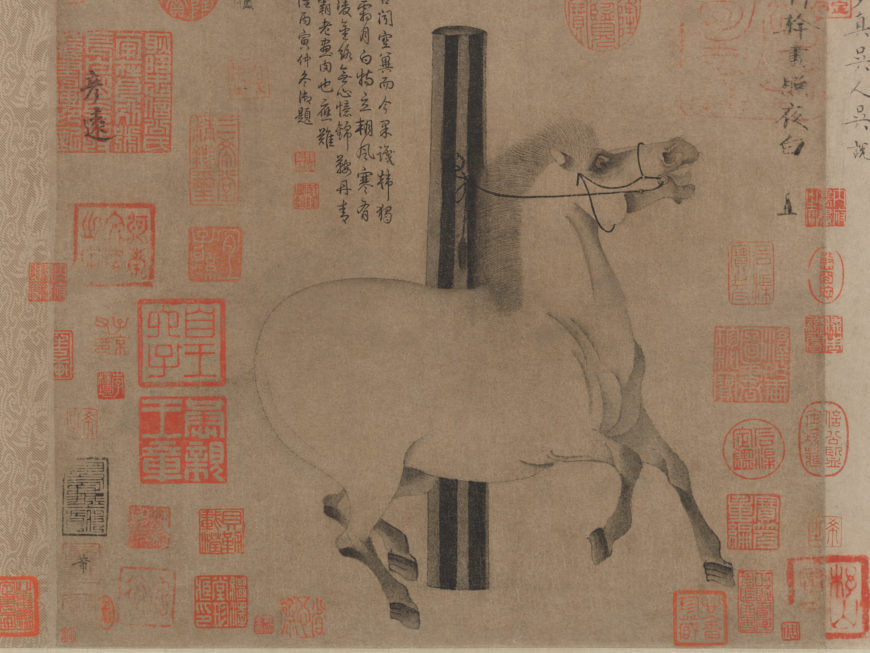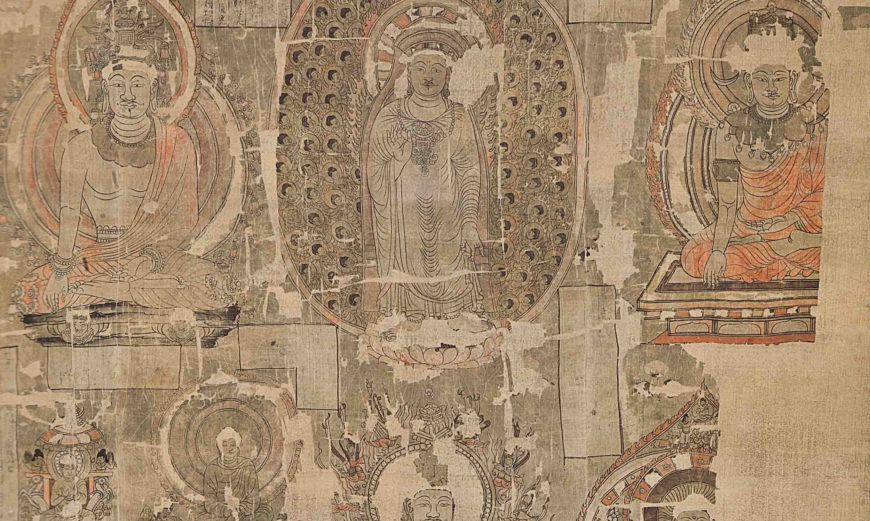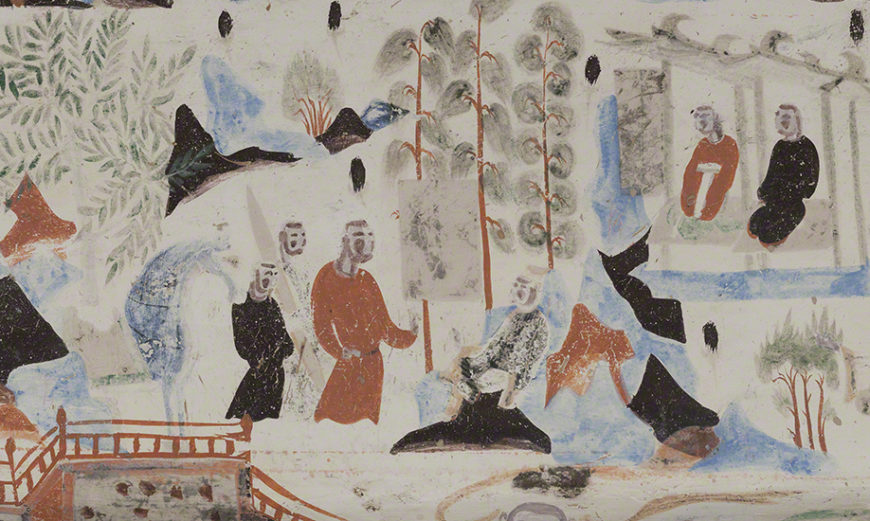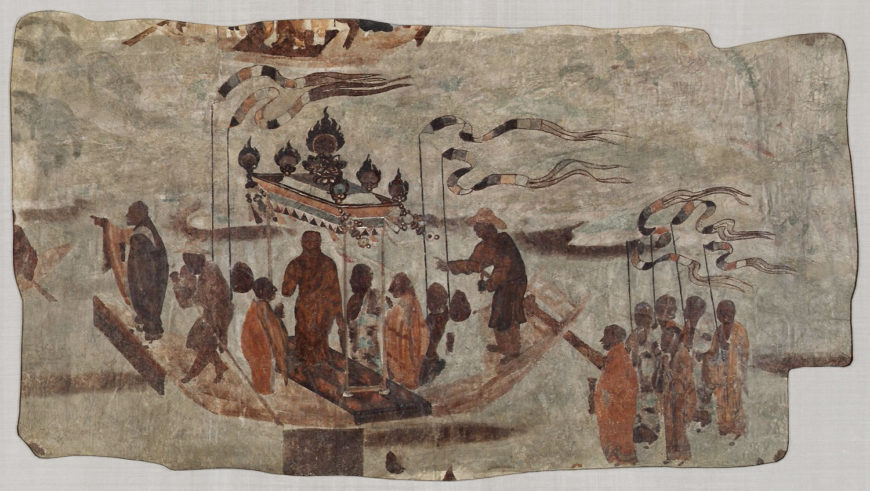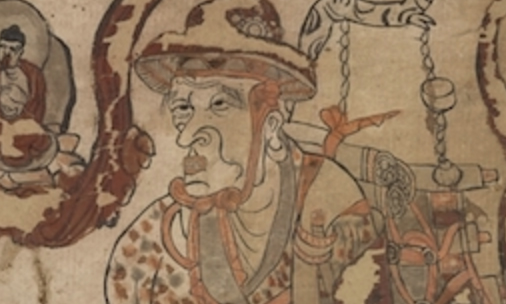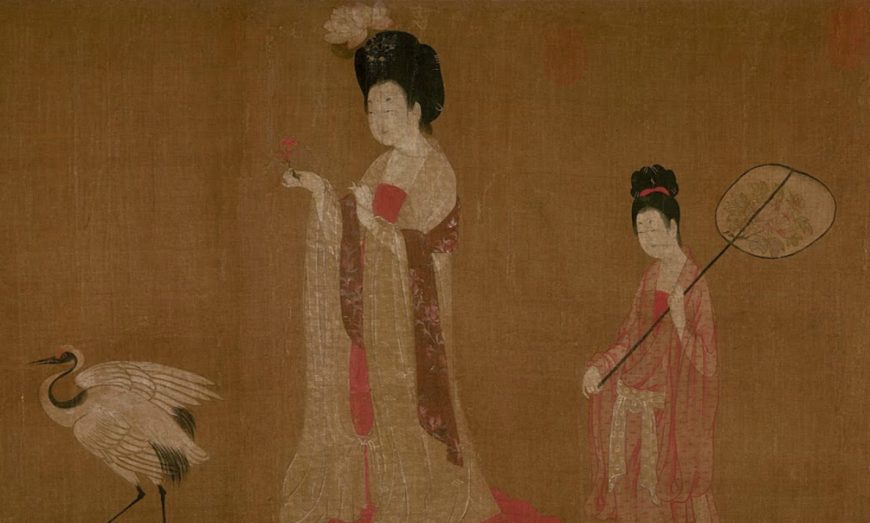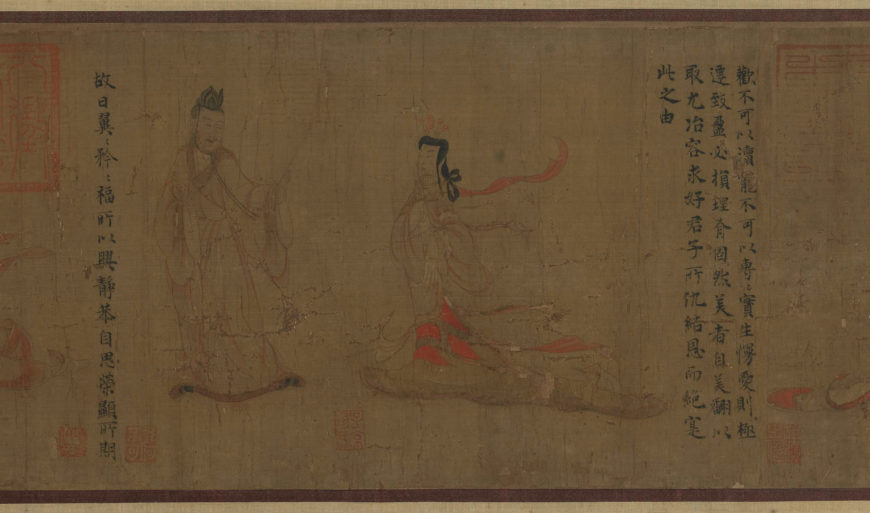
Court lady and Emperor (detail), Admonitions of the Instructress to the Court Ladies, attributed to Gu Kaizhi (c. 345 C.E.–c. 406 C.E.), Tang dynasty, 6th–8th century C.E., China, 24.37 x 343.75 cm (© The Trustees of the British Museum, London)
Admonitions of the Instructress to the Court Ladies, attributed to Gu Kaizhi (about 345–406), Tang dynasty, 6th–8th century C.E., China, 24.37 x 343.75 cm (© The Trustees of the British Museum, London)
In total, nine scenes were depicted on this scroll, but it is now incomplete; the first two scenes are missing, as well as the text to the first scene.
The handscroll has a complex, horizontal arrangement. Nine scenes illustrate the text, beginning from the right. There may have been three additional scenes and texts at the beginning of the scroll, which are now missing. It was re-mounted during the reign of the Qianlong emperor as he greatly admired it. It was mounted in its current format at the British Museum in 1914, to preserve it more safely.
None of Gu Kaizhi’s original works has survived, but he has still acquired a legendary status, both as a painter and as a writer on Chinese painting. He was given extensive coverage in the dynastic histories and the seminal text on painting, Li-dai ming-hua ji written by Zhang Yanyuan (about 847). Gu Kaizhi’s reputation was probably helped by anecdotes about his eccentricity; he was said to have been perfect in ‘painting, literary composition, and foolishness.’
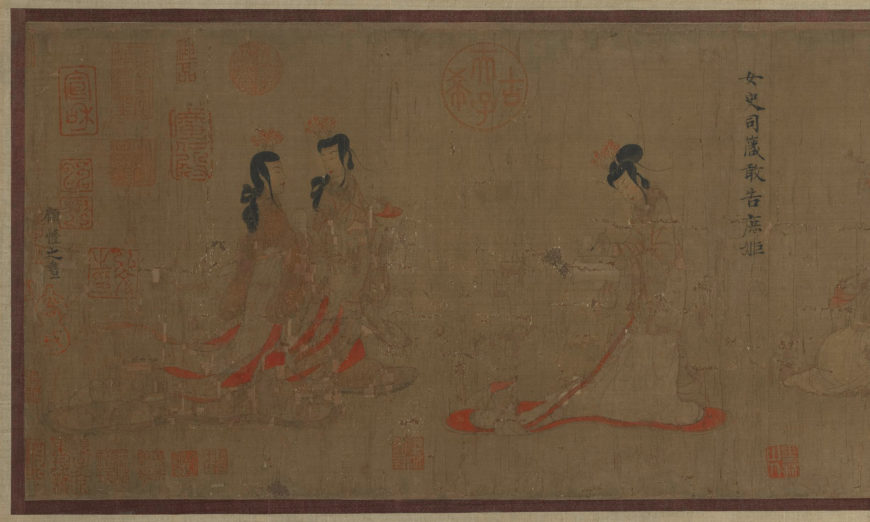
Court ladies (detail), Admonitions of the Instructress to the Court Ladies, attributed to Gu Kaizhi (c. 345–c. 406), Tang dynasty, 6th–8th century C.E., China, 24.37 x 343.75 cm (© The Trustees of the British Museum, London)
This painting has been executed in a fine linear style that is typical of 4th century figure painting. Similar pictorial motifs have been discovered in contemporary tombs. Texts describe Gu Kaizhi as having painted in this manner. The inscriptions and seals on this scroll date back to the 8th century, when this copy of Gu’s original was probably painted.
Before its arrival at the British Museum in 1903, the scroll passed through many hands. The history of the painting can be ascertained through the seals and inscriptions, beginning with the 8th century seal of the Hongwen guan, a division of the Han-lin Academy.
The painting was subsequently in the collections of well-known connoisseurs who added their own seals and inscriptions, before ending up in the imperial collection during the reign of the Qianlong emperor.
© The Trustees of the British Museum


